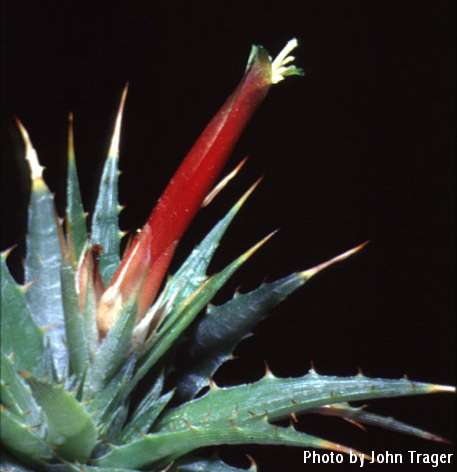Now considered by some to be included in Deuterocohnia, abromeitiellas are unusual for their sessile inflorescences nestled among the foliage. Their dwarf, clumping rosettes are also distinctive, forming mossy-looking mounds to two feet or more across. A more tactile investigation of the foliage soon reveals its stiff, spinescent nature. Allied to the edible pineapple, Abromeitiella, along with most of the other succulent, terrestrial bromeliads, belong to the subfamily Pitcairnioideae of the Bromeliaceae. A. lotteae closely resembles the larger form of A. brevifolia (synonym: A. chlorantha), from which it is distinguished by its flower color. The latter has emerald-green flowers that blend in with the foliage. In A. lotteae only the tips are green on the purplish-red tubular perianth, a color that Werner Rauh aptly described in delightful German-English as “brown-winered”—rather like the color of red wine without sulfites to preserve that unnatural Welch’s grape-juice purple. Rooted cuts of HBG 76184, received from W. Baker, who received it from Ed Gay, who received it from Rauh in the mid-1980s. This is therefore probably the clonotype. It is named for Mrs. Lotte Hromadnik, who collected the plant with her husband, Dr. R. Hromadnik, at the type locality in southern Bolivia. $10.

Published in the Cactus and Succulent Journal, Vol. 75 (2), March - April, 2003